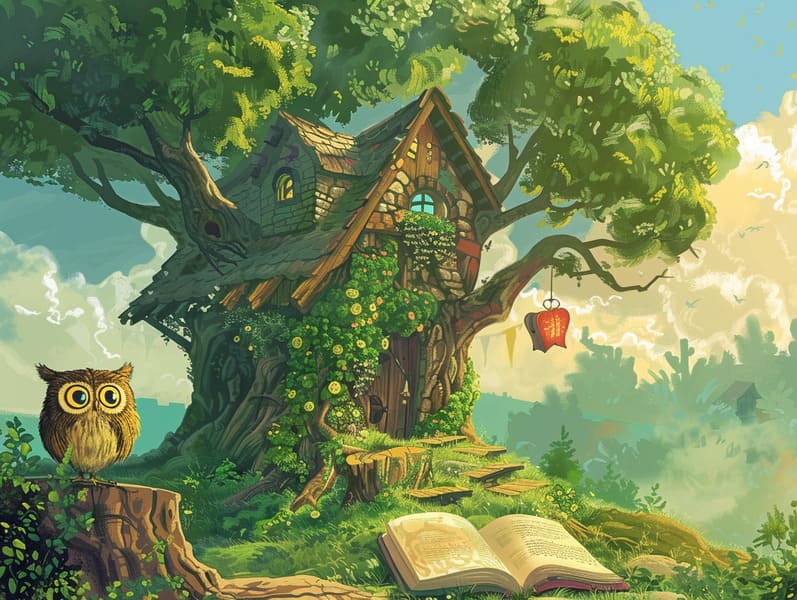The Story Behind Best Fairy Tales with Their Everlasting Allure.

Vintage fairy tales have enduring presence. These stories have been conveyed from one generation to the next far before they were ever published. They developed from a variety of traditions, including Asian traditions. They were initially narrated among older generations, often carrying themes and messages pertaining to the societal norms and beliefs of the time.
The famous Grimm duo, Jacob and Wilhelm (the Grimm brothers), were among the first to compile and publish many of these beloved fairy tales. Their collection, "Grimm's Fables," included narratives like "The True Bride," "The Story of Hansel and Gretel," and "The True Story of Snow White," which have since become hallmarks in the world of famous fairy tales. Similarly, the Danish author's delightful tales, such as "The Sea Maid," and "The Ugly Duckling," have won hearts worldwide, securing their place in the pantheon of treasured fairy tales.
Despite their ancient origins, these stories remain as impactful as ever, especially as bedtime stories for kids. These delightful tales are now available in diverse formats, including vividly illustrated books, whimsical animations, and online fairy tales.
Their continued relevance can be linked to several charming aspects:
Ethical Lessons: Traditional fairy tales often share important moral lessons. Stories like "The Story of the Boy Who Cried Wolf" teach the value of truth, while "The Hare and the Tortoise" emphasize the qualities of steadfastness and unpretentiousness. These stories offer the young clear distinctions between correct and incorrect, guiding their moral compass in a mild yet important way.
Compassion and Knowledge: Classic fairy tales frequently include individuals facing difficulties and adversities, stimulating audiences to feel with their struggles and boost their triumphs. For instance, "The Story of Beauty and the Beast" teaches us the virtue of seeing beyond looks to perceive the inner self of a character, promoting compassion and awareness.
Cultural Recognition: Many fairy tales are infused with the cultural contexts from which they came. Understanding these narratives can provide captivating looks into different heritages, developing a sense of global appreciation and understanding.
Fantasy and Imagination: The fanciful elements in old fairy tales—mythical entities—provoke children’s imaginations. These stories carry readers to fantasy realms, boosting creative ideas and a sense of curiosity that persists a lifetime.
Classic fairy tales are not only whimsical but also teaching. They function as charming tools read more in building various cognitive and emotional skills in kids. When ancient fairy tales are spoken, they foster linguistic abilities by showing new terms and detailed sentence structures. This practice also boosts listening abilities and mental focus, as the young follow the story, keen to see what happens next.
Furthermore, debating the themes and characters of classic fairy tales can develop thought processes and reasoning skills. Kids are taught to notice patterns, predict happenings, and catch on to cause and effect. These reflections also boost young ones articulate their thoughts and feelings, strengthening their emotional intelligence.
In today’s cyber age, the prevalence of free fairy tales online has made these tales more reachable than ever. Web-based platforms and digital apps offer wide arrays of famous fairy tales that can be perused or heard anytime, anywhere. Fairy tales narrated are particularly favored, making available an charming way for kids to experience these whimsical stories. Audio stories and narrated videos take characters and settings to life, often paired with magical musical scores and melodies that augment the storytelling journey.
The unfading fascination of traditional fairy tales lies in their ability to modify to contemporary times while staying true to their central values. Contemporary updates of these fairy tales often introduce more representative figures and modern settings, making them relatable to today’s audience. However, the basic principles of spirit, charity, and lawfulness remain unchanged, continuing to influence readers of all ages.
Classic fairy tales also offer a sense of serenity and knownness. They feature a systematic narrative with a obvious beginning, middle, and end, often closing with the closure of conflicts and the triumph of good over bad. This dependability can be heartening for the young, extending a sense of consistency in an constantly changing world.
Ancient fairy tales continue to entrance and educate new generations, maintaining their elegance and relevance in modern society. As children's night stories, they impart a perfect blend of captivation and insight, enriching moral values, empathy, and creativity. The accessibility of digital storybooks and the popularity of fairy tales spoken affirm that these ancient narratives remain available to new generations.
By holding onto and passing on these narratives, we continue to treasure the rich tapestry of fables and cultural heritage. Whether you are experiencing a vibrantly illustrated book, viewing a virtual library, or listening on an audio story, the majesty of old fairy tales is always within reach. These tales teach us of the steadfast effect of stories and its ability to gather us across centuries and lands.
No matter if you are discovering a vividly illustrated book, browsing a electronic library, or hearing an sound book, the allure of famous fairy tales is always within reach.
These tales point out of the invariable magic of storytelling and its ability to unify us across epochs and places, making a tie that delights and instructs alike.